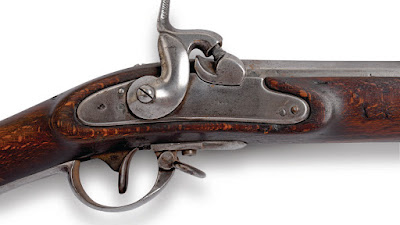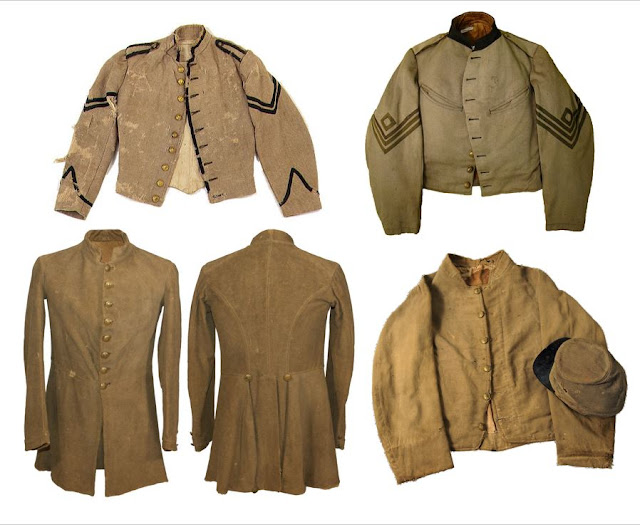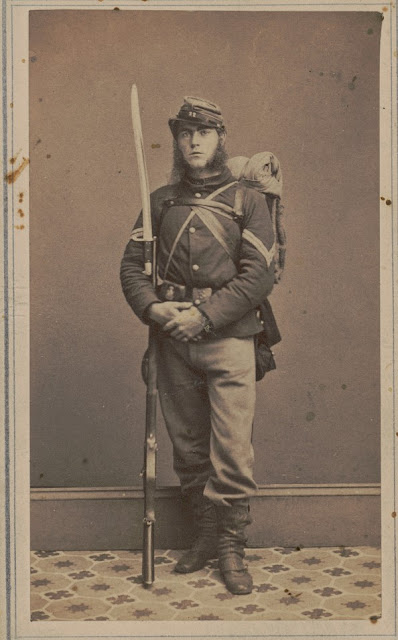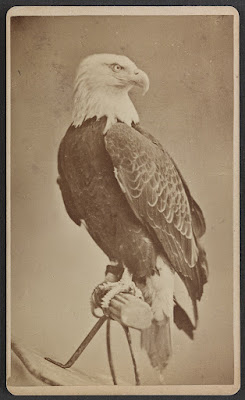It Made the Air Hideous: At Chickamauga with the 51st Illinois
By the time the 51st Illinois arrived on the field of Chickamauga on the afternoon of September 19, 1863, the battle had already been raging for hours and, at least in the part of the field the regiment arrived upon, the battle seemed to be going against the Army of the Cumberland. As a matter of fact, the Confederates had just overrun the 8th Indiana Battery.
"We were surprised to see the enemy in such force, but as we were ordered to advance and take back the battery, there was no time lost in thinking the matter over," stated Orderly Sergeant Charles Strickland of Co. G. "The 22nd and 42nd Illinois regiments were ordered to advance and as the brave veterans moved steadily forward, we could see the enemy unfurl their battle flags and cheer after cheer filled the air with repeated echoes which was followed by their shells which came screaming through the air. The distance was not half a mile and as they advanced, the enemy fired with great rapidity."
"They poured such heavy muttering volleys from their double columns in our single line that they made wide gaps in our line which, without support, could not be closed. So, they were obliged to lay down to hold what ground they had gained. Then Colonel Luther Bradley commanding the brigade, as brave a man as ever tread beneath a flag, came riding in front of his regiment [51st Illinois] with hat in hand and gave the order to forward, then the command to charge. In double quick and with a shout which mingled with the roar of battle, they charged," he continued.
Sergeant Strickland’s account of the first day’s fighting at Chickamauga first saw publication in the November 7, 1863, edition of the Waukegan Weekly Gazette.
Chattanooga,
Tennessee
October 11, 1863
Friend Cory,
I seat myself to give you a detail of
the movements of the Third Brigade of Sheridan’s division at the Battle of
Chickamauga on September 19. We were first formed in line on the right but soon
the roaring of cannon and volleys of musketry could plainly be heard on the
right center. We then received orders to move that way and went at a double
quick; reached the place just in time to see the enemy drive our men back and
take possession of the 8th Indiana Battery.
We were surprised to see the enemy in
such force, but as we were ordered to advance and take back the battery, there
was no time lost in thinking the matter over. The 22nd and 42nd
Illinois regiments were ordered to advance and as the brave veterans moved
steadily forward, we could see the enemy unfurl their battle flags and cheer
after cheer filled the air with repeated echoes which was followed by their
shells which came screaming through the air. The distance was not half a mile
and as they advanced, the enemy fired with great rapidity.
They poured such heavy muttering
volleys from their double columns in our single line that they made wide gaps
in our line which, without support, could not be closed. So, they were obliged
to lay down to hold what ground they had gained. Then Colonel Luther Bradley
commanding the brigade, as brave a man as ever tread beneath a flag, came
riding in front of his regiment [51st Illinois] with hat in hand and
gave the order to forward, then the command to charge. In double quick and with
a shout which mingled with the roar of battle, they charged.
Then the cannonading commenced. The fire
of our guns drew a most terrific one from the enemy’s entire line. I thought
that I had heard the roaring of battle before when at New Madrid, Island No.
10, Tiptonville, Farmington, Corinth, Nashville, and Stones River, but I never
yet heard such tremendous firing. It made the air hideous and shook the very
earth beneath us. The hills and mountains seemed to reel like drunken men.
“We left Bridgeport, Alabama on the 2nd of September and made some very heavy marches over those mountains of Georgia through the dust and heat but got into no fight worthy of mention until Saturday the 19th when we went in about 4 p.m. We were ordered to charge into a cornfield and a strip of wood on the north side of the field. Three brigades had charged in succession before us and had been repulsed every time. We went in and was in there some 15 minutes when we had to fall back as the others did. Sergeant D. Burr Ackley of Forksville was one of the color bearers and the flag that he carried was shot clear from the staff yet he came out unhurt till the next day when he was instantly killed.” ~ Sergeant Cornelius F. Bliss, Co. G, 51st Illinois
 |
| The 51st Illinois carried a mix of arms at Chickamauga but .54 caliber Lorenz rifle muskets predominated. |
For some time, this most terrific fire continued and the
contest raged with intense fury, during which time the shrieking of shells, the
crash of falling timber, the fragments of rock flying through the air shattered
from the cliffs by solid shot and shell. The canister and bullets flew like
hailstones in water. Men were falling like leaves when shaken by the blasts of
autumn amid the fierce neighing of the many wounded artillery horses. I saw
many a Rebel flag go down but how quickly they again mounted the breeze through
the dense columns of smoke which were rising upward then slowly floating away.
Our colors that were shot down three
times at Stones River were completely severed from the staff, but the latter
was carried high and proudly amid the wild tempest of that terrible day. The
sun hid itself behind Lookout Mountain as if loth to look back upon the scene
and witness such inhumanity- all of which made a terrible picture which my pen
fails to describe.
Thus, daylight died away and evening with darkness came but
not rest for the vast pulsing heart of the army knows no rest. We held the
field that night and under the fire of the enemy’s sharpshooters we succeeded
in carrying off our wounded, drawing off the 8th Indiana Battery,
and carrying with us a Rebel flag belonging to the 24th Alabama Tigers
which has inscribed on it, “In God is Our Trust.” One company entered the
engagement with 30 men and had 6 killed, 12 wounded, and 5 taken prisoner. Our
regiment now numbers 10 officers and 150 men for duty with Major [Charles W.] Davis
in command.
We are encamped in this noble city which consists of wide
streets and large vacant lots, although there are some very nice buildings and
large manufacturing establishments, the largest I have seen in the South. We
have two lines of entrenchments and some very good forts erected with guns
which point out over the walls, big enough for smokehouses. There is very
little or no firing on the picket line but our batteries exchange shots with
theirs very often. Their signal corps were stationed on Lookout Mountain in
plain sight of us all until yesterday when they were obliged to leave on
account of our shells.
I visited the 96th Illinois the other day and was rejoiced to meet so many of my old Lake County acquaintances. But I did not intend to impose on you with such a long uninteresting letter, so I will close.
Very respectfully
yours,
Charles E. Strickland
Orderly Sergeant Strickland would be killed in action during the assault at Kennesaw Mountain on June 27, 1864.
To learn more about the Battle of Chickamauga, please check out my Battle of Chickamauga page which includes links to the 100+ blog posts describing various aspects of the bloodiest battle in the western theater.
Sources:
Letter from Orderly Sergeant Charles E. Strickland, Co. G, 51st Illinois Volunteer Infantry, Waukegan Weekly Gazette (Illinois), November 7, 1863, pg. 2
Letter from
Sergeant Cornelius Freeman Bliss, Co. G, 51st Illinois Volunteer
Infantry, Waukegan Weekly Gazette (Illinois), October 3, 1863, pg. 2











Comments
Post a Comment